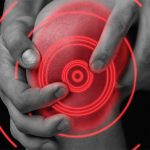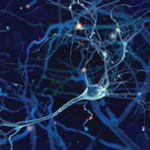WASHINGTON, D.C.—A deeper understanding of the mechanisms of pain and why some people become hypersensitive to typically innocuous stimuli may one day lead to more effective, targeted pain therapies, said Clifford Woolf, MD, PhD, a neurobiologist at Children’s Hospital of Boston and professor of neurology at Harvard Medical School in Boston, in a lecture titled, “Mechanisms of Pain in Rheumatic Diseases,” at the 2012 ACR/ARHP Annual Meeting, held here November 9–14. [Editor’s Note: This session was recorded and is available via ACR SessionSelect at www.rheumatology.org.]
There are different types of pain, and differentiating these types is an important tool in the diagnosis and treatment of disease, said Dr. Woolf. Nociceptive pain, the sensing of noxious stimuli, requires intense stimuli for activation, such as extreme heat, cold, or chemical irritants. Our skin is densely packed with nociceptive fibers that help us detect noxious stimuli. In patients with inflammatory pain, neuropathic pain related to neuronal damage, or dysfunctional pain that occurs despite the absence of inflammation or nervous system damage, there typically is a low pain threshold.
Nociceptive pain serves an important physiological purpose, Dr. Woolf said. “The pain itself has a very unpleasant quality, but this has a key protective factor,” he added. “We not only withdraw from the stimuli, but we learn from it. This is most forcefully taught to us when we see patients with congenital insensitivity to pain. Indeed, their life expectancy is reduced.”
Key proteins are involved in the transduction of pain signals in the nervous system. The first of these proteins to be isolated and cloned was TRPV1, which is activated by capsaicin and helps us recognize noxious heat. Identifying these led to the development of potential pain therapies like TRPV1 antagonists and protein kinase C inhibitors, which are now in clinical trials.
Pain Hypersensitivity
Some patients develop a pain hypersensitivity, Dr. Woolf said. These patients’ pain threshold is lower than normal, and the duration of their pain response may be long lasting. There are two main mechanisms of pain hypersensitivity: peripheral sensitization and central sensitization. Peripheral sensitization is associated with inflammation and tissue damage found in many rheumatic diseases. It’s marked by a lower pain threshold and an increase in the patient’s response to the peripheral ends of nociceptors, the nerve cell endings that send pain signals to the brain in response to stimuli.
Peripheral sensitization is the result of changes in transduction proteins that affect the excitability of nociceptors. Noxious stimuli, like excessive heat, are converted to an electric response in the nervous system via these proteins. Normally, humans begin to find heat painful at approximately 108° Fahrenheit, but after peripheral sensitization, that threshold may fall. Proteins like TRPV1 may be involved in this process. A warm shower may feel painfully hot, for example, Dr. Woolf said.


